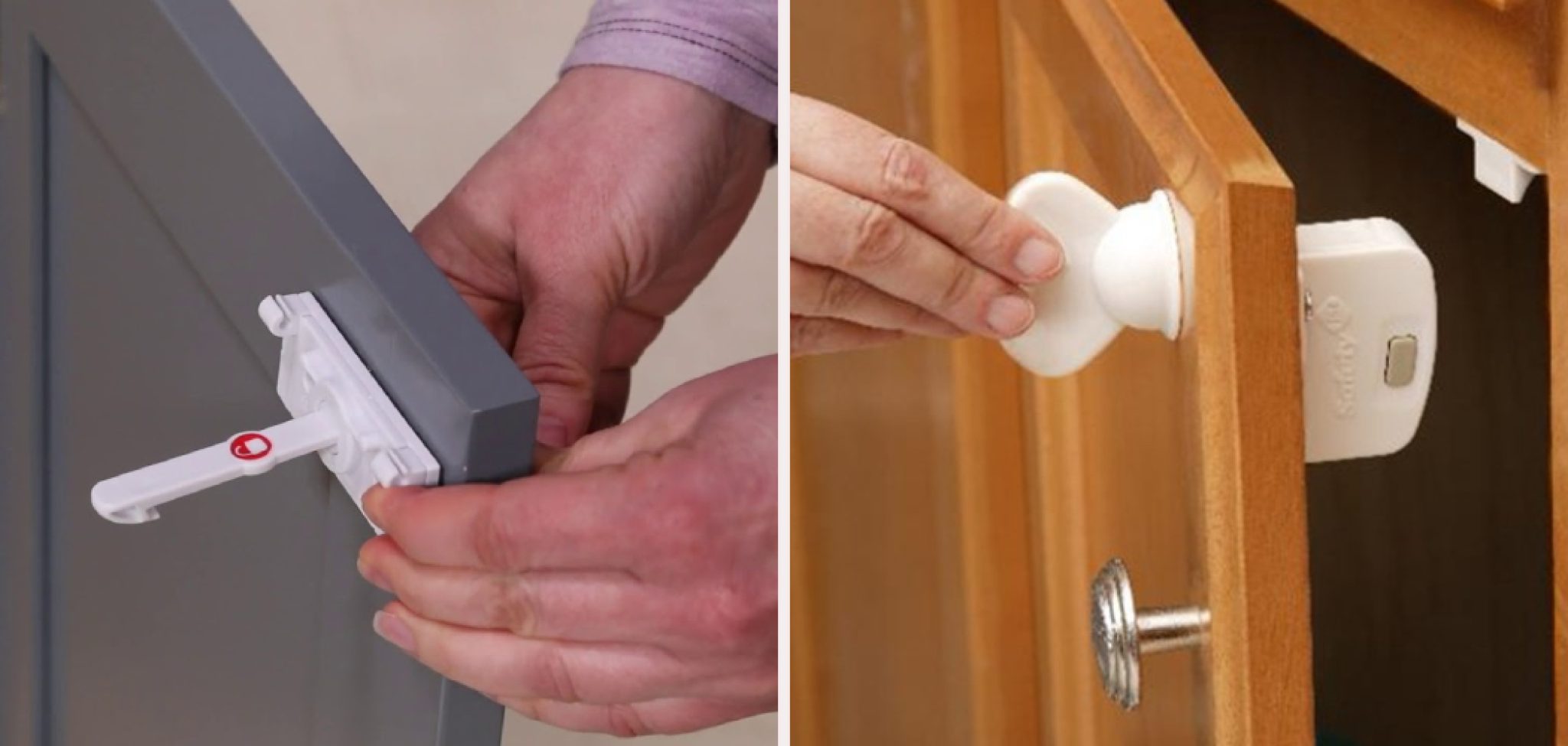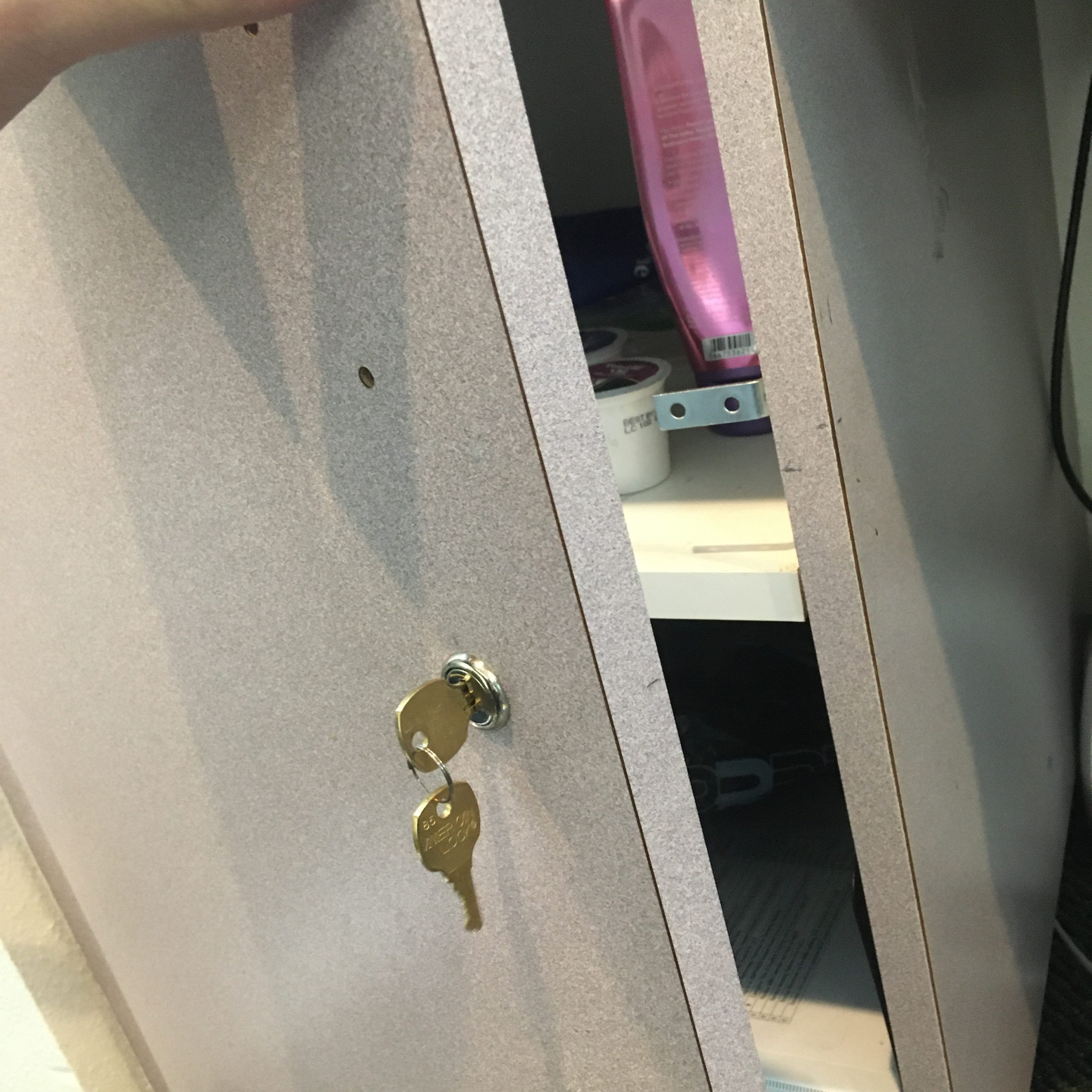Types of Cabinet Door Locks: Cabinet Door Lock Installation

Cabinet door locks offer a convenient and secure way to protect your valuable belongings. These locks come in various types, each with its own advantages and disadvantages. Understanding the different types of cabinet door locks can help you choose the best option for your needs.
Keyhole Locks
Keyhole locks are the most traditional type of cabinet door lock. They feature a keyhole on the outside of the door and a locking mechanism inside. These locks are typically made of metal and are often used for cabinets that need to be locked securely, such as those containing important documents or valuables.
- Advantages: Keyhole locks are generally more secure than other types of cabinet door locks because they require a key to unlock. They are also relatively inexpensive and widely available.
- Disadvantages: Keyhole locks can be difficult to use, especially if you have limited dexterity. They can also be susceptible to picking or forced entry if the lock is not high quality.
- Examples: Keyhole locks are commonly found on filing cabinets, medicine cabinets, and gun safes.
Knob Locks
Knob locks are another common type of cabinet door lock. They feature a knob on the outside of the door that is turned to lock and unlock the mechanism. Knob locks are often used for cabinets that need to be locked and unlocked frequently, such as kitchen cabinets or bathroom cabinets.
- Advantages: Knob locks are easy to use and can be operated with one hand. They are also relatively inexpensive.
- Disadvantages: Knob locks are not as secure as keyhole locks, as they can be easily opened with a simple tool. They are also susceptible to wear and tear, which can make them difficult to use over time.
- Examples: Knob locks are commonly found on kitchen cabinets, bathroom cabinets, and bedroom dressers.
Push-Button Locks
Push-button locks are a modern type of cabinet door lock that uses a push-button mechanism to lock and unlock the door. These locks are often used for cabinets that need to be locked quickly and easily, such as those containing valuables or important documents.
- Advantages: Push-button locks are very easy to use, even for people with limited dexterity. They are also relatively secure, as they require a specific combination to unlock.
- Disadvantages: Push-button locks can be more expensive than other types of cabinet door locks. They can also be difficult to re-key if the combination is lost.
- Examples: Push-button locks are commonly found on file cabinets, jewelry boxes, and small safes.
Installation Process

Installing a cabinet door lock can be a simple DIY project, adding security and functionality to your cabinets. It involves a few steps that are straightforward with the right tools and instructions.
Preparing the Door
Before beginning the installation process, it’s crucial to prepare the cabinet door. This step ensures a smooth and successful installation.
- Choose the location for the lock on the cabinet door, considering factors such as accessibility and aesthetics.
- Mark the desired location using a pencil or marker, ensuring it’s centered and level.
- Use a tape measure to confirm the accuracy of your markings.
- If necessary, use a chisel or other tools to create a recess for the lock mechanism.
Drilling Holes
Drilling holes is a crucial step in installing a cabinet door lock, requiring precision and care.
- Using a drill bit that matches the diameter of the screws provided with the lock, drill pilot holes at the marked locations on the door.
- These pilot holes will guide the screws during installation, preventing them from splitting the wood.
- For the lock mechanism, drill a hole that accommodates its size and shape, ensuring it’s deep enough for the mechanism to fit snugly.
Installing the Lock Mechanism, Cabinet door lock installation
Installing the lock mechanism is a key step in the process, requiring proper alignment and securing.
- Position the lock mechanism in the drilled hole, ensuring it’s aligned with the marked location on the door.
- Secure the mechanism to the door using the screws provided, tightening them firmly but not excessively to prevent damage.
- Once the lock mechanism is installed, test its functionality, ensuring it operates smoothly and securely.
Attaching the Handle
Attaching the handle to the cabinet door completes the installation process, adding a functional and aesthetic element.
- Align the handle with the lock mechanism, ensuring it’s level and centered.
- Secure the handle to the door using the provided screws, tightening them firmly to ensure a secure attachment.
- After attaching the handle, test the lock again, ensuring it operates smoothly and securely with the handle in place.
Troubleshooting Common Issues

Even with careful installation, problems can arise. Here are some common issues you might encounter while installing a cabinet door lock and how to resolve them.
Misaligned Holes
Misaligned holes are a common problem that can occur during the installation of cabinet door locks. If the holes for the screws are not aligned correctly, the lock will not be secure, and the door may not close properly.
- Cause: The most common cause of misaligned holes is using a drill bit that is too large for the screws. Another cause could be using an inaccurate template or marking the holes incorrectly.
- Solution: If the holes are slightly misaligned, you may be able to adjust the lock by gently tapping it into place with a rubber mallet. If the holes are significantly misaligned, you will need to drill new holes. To prevent this, always use a drill bit that is the same size as the screws, and carefully mark the holes before drilling. Use a template to ensure accurate placement of the lock.
Difficulty Turning the Key
If you are having difficulty turning the key in the lock, there are a few possible causes.
- Cause: The key may not be fully inserted into the lock. There could be debris in the lock mechanism, or the lock itself could be faulty.
- Solution: First, make sure the key is fully inserted into the lock. If that doesn’t solve the problem, try cleaning the lock with a small brush and a vacuum cleaner. If the lock is still difficult to turn, it may be faulty and need to be replaced.
Loose Lock
A loose lock can be caused by screws that are not tight enough or by a lock that is not properly installed.
- Cause: This can happen due to loose screws or incorrect installation of the lock.
- Solution: Tighten the screws that secure the lock to the door and the door frame. If the lock is still loose, it may need to be reinstalled. Ensure the lock is seated properly in the strike plate before tightening the screws.
Cabinet door lock installation – Installing a cabinet door lock might seem like a simple task, but it’s crucial to choose the right type and size for your needs. Just like selecting a comfortable grey fabric bedroom chair for your bedroom, the right lock can enhance security and peace of mind.
Remember, a well-installed lock can be the difference between a secure home and an easy target for unwanted intrusion.
Securing your belongings with a cabinet door lock installation can add a sense of peace of mind, especially in a shared space. While you’re focusing on safety, why not enhance the visual appeal of your bedroom with some light grey bedroom accessories ?
They can complement the overall look of your space and create a serene atmosphere. Once your belongings are secure and your bedroom feels refreshed, you can relax knowing that your space is both functional and stylish.
